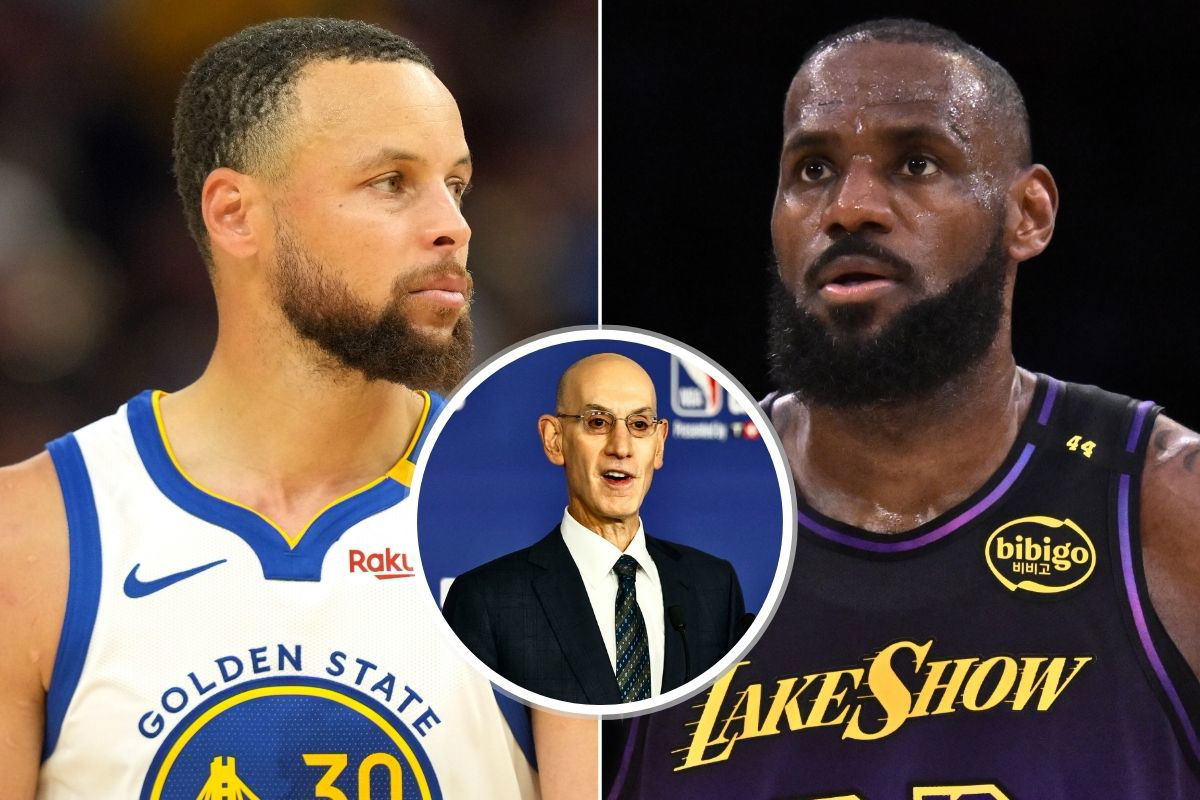
Imago
Image Credits: Imagn

Imago
Image Credits: Imagn
Stephen Curry’s first shot against the Portland Trail Blazers was a four-point play. Nothing unusual for him, but it featured a massive change coming to officiating this season. Defenders can’t just freely swat at a shooter’s hand anymore. However, before understanding what that means, knowing what a “high five” is is vital.
Watch What’s Trending Now!
Unlike a shooting foul, contact on high fives appears after the shot. It is when a defender makes a second motion after the ball is released by a shooter. Previously, Dillon Brooks and the Houston Rockets hounded Curry’s injured thumb without being penalized. But before the season, referees met in New York to bring a much-needed change to the rule.
Now, such contact will result in a shooting foul and protect players from contact after the shot. The wording “second motion” is critical. Defenders can only contest shots vertically, which is considered a normal closeout. If they later change their trajectory to target a shooter’s hand intentionally, referees will call it in favor of the offensive team. But it needs to be clear.
ADVERTISEMENT
‘Incidental’ contact will not result in a high-five foul. For example, if the defender makes contact with the shooting hand after the play in contesting a shot vertically, they won’t be penalized. Only when they make a conscious effort to hit the shooting player will a foul be assessed. Unless that criterion is met, a defender can make minimal contact.
See below for Part 2 of the 2025-26 Points of Emphasis video (narrated by SVP, Head of Referee Development and Training Monty McCutchen), which provides examples and guidance regarding Closeouts on Jump Shots – High Fives: pic.twitter.com/FwToG4tySd
— NBA Official (@NBAOfficial) September 26, 2025
The rule change is particularly beneficial for high-volume shooters. Think about players such as Anthony Edwards. Without the change, the high five risks injuring a player’s dominant hand. The repair prevents defenders from leveraging the holes in the rule and safeguards offensive players from injuries.
ADVERTISEMENT
And there’s one man who could benefit immensely from it.
ADVERTISEMENT
Stephen Curry could wreak havoc with the high-five rule
Steve Kerr was the sole coach who asked for this rule change. The Warriors-Rockets series emphasized the dangers of giving physical defenders such a pass. Kerr could see them intentionally target Stephen Curry. Now, that can’t happen anymore. And the Baby Face Assassin felt it was long “overdue”.
“We’ve been trying to get that call for years. So I do appreciate that, as I’m sure I’ll argue one if it happens again. That’s just part of basketball,” he said about the rule change.
As of last season, when the closeouts weren’t as closely looked at, Curry and Dub Nation felt he didn’t get a free whistle. The numbers proved it. According to SF Gate, the two-time MVP ranked 49 in fouls drawn. For a scoring anchor such as Stephen Curry, it comes off as an underwhelming number.
ADVERTISEMENT
Not only is that number bound to go up, but Curry could see another statistical uptick at 37. That’s purely because of his free-throw mastery. He’s a 91% free-throw shooter for his entire career.
With high fives being called now, the Warriors ace could regularly get to the line by getting the best out of a defender’s desperation. Even without the rule, Curry averaged 24.5 points last season. The rule change allows him to extend his career playing at an elite level.
It’s going to protect Curry and other players from picking up injuries. He already showed a preview against Portland. But as the intensity rises, Curry will draw more attention. For the high-five rule, that’s the bait he wants defenders to take.
ADVERTISEMENT
Do you feel this rule change impacts the game positively? Let us know your views in the comments below.
ADVERTISEMENT
ADVERTISEMENT
ADVERTISEMENT

